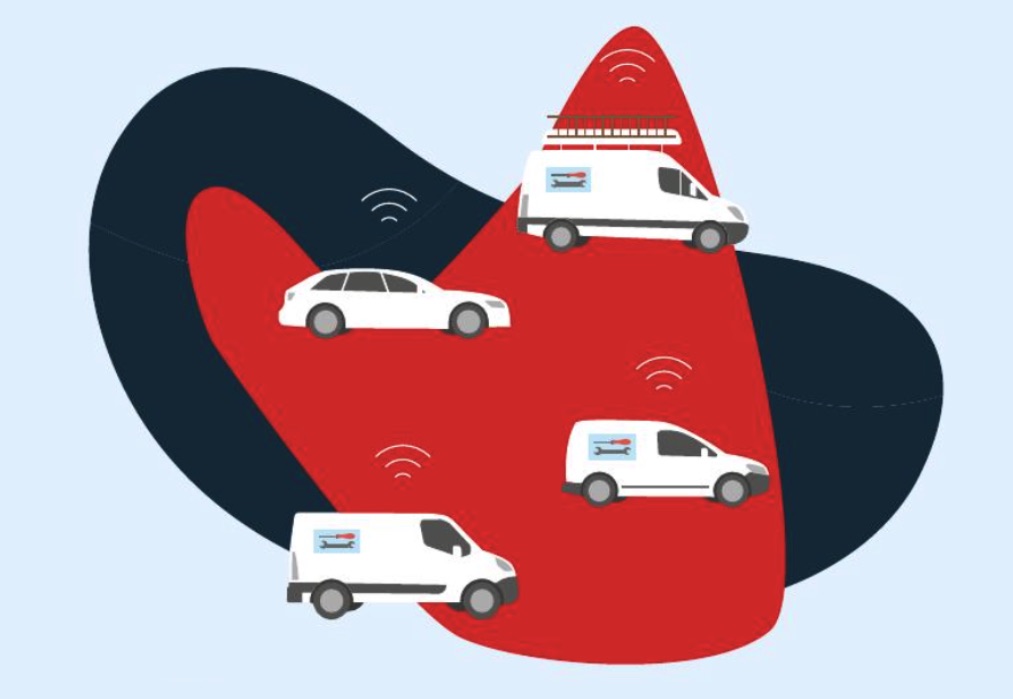As lockdown eases, changes in how we do business have only just begun. One country that might be able to provide valuable insight for SMEs is Germany. Having begun lockdown easing back in April, it is already dealing with the next economic phase that small businesses in the UK will have to adapt to.
Our recent study involving SMEs in Germany reveals what Britain’s economic future might look like, and some best practices for how small UK businesses can face it head on.
Here are 4 lessons from Germany on how British SMEs can thrive post lockdown:
Re-imagine customer journeys to capture support
One silver lining to this dark cloud is the community support SMEs are currently experiencing: Pinterest, for example, recorded an increase of 351 per cent in support of small businesses.
To capitalise on that support, German respondents to the June Vimcar survey recommended ways to remodel customer journeys:
– Use social media
With people craving social interaction more than ever, social media usage has seen a 40 per cent increase. As a result, many German SMEs are feeding into #supportyourlocals and #nowopen threads.
UK businesses can also take advantage of this social media uplift and use the free tools social media is now offering in the wake of this crisis:
- YouTube has now created “Video Builder Tool”, allowing businesses without a marketing budget to create a video ad, which can then be shared. All you need to do is sign up
- And how should this video content be shared? Facebook, in response to Covid, has launched its Business Resource Hub, advising businesses on how to post effective content – even providing templates for posts
- Pinterest has turned itself into a virtual shopping platform by creating its Verified Merchant Program
- Instagram has created “stickers”, a virtual voucher feature, so followers can easily order deliveries, buy gift cards (to encourage customers to visit shops) and even make donations to small businesses
– Local advertising campaigns
Even though shops, bars and restaurants are open in Germany, customers are still avoiding physically visiting businesses. Since regulations were lifted, footfall has only increased by 29 per cent.
To stimulate visitor count, shops in the city of Rathenow, Germany have come together to produce flyers, advertising all their in-store discounts in collective campaigns. Not only does this cut marketing costs but entices an entire customer base into the city centre and nudges a community to show their support.
– Virtual personal shopping
To supplement footfall that’s still lacking, another German business surveyed is using video calls to walk customers around their shop, picking up and sending the products customers decide to buy. This is a great idea if you have elderly customers, less accustomed to online shopping.
– Receiving the product
In the UK, home deliveries have increased by more than 100 per cent.
According to the survey of SMEs in Germany, getting home delivery right is vital, even after lockdown. SMEs need to offer delivery, advertise as much on their social media and offer various purchasing alternatives – such as a video-call shopping experience – to boost physical sales.
One way to deliver faster, or make more customer appointments in one day, is by optimising your fleet.
See also: 4 ways small shops can reinvent themselves post coronavirus

#2 – Use fleet cars for home delivery
Deliveries are already a focus for SMEs around the UK at the moment. But what about the work behind home deliveries? Can fleet vehicles perform deliveries better and cheaper? Absolutely. (The impact on business is probably more than you would expect.)
At a time where delivery demands have far eclipsed that of Christmas periods, some German businesses are avoiding having to hire extra drivers or make them go beyond permitted driving times (of which there is evidence of in the UK).
By streamlining their existing fleet, some German SMEs have managed to cut costs, keep employees safe and their customer deliveries on time.
Of course, this applies to any business on the road, whether it be with deliveries, inventory pickups or customer appointments.
Employers can save 20 per cent on fleet-related costs by using a fleet software, for example. Software specialising in the needs of SMEs, such as our own Vimcar, offers products which optimise existing fleets, the routes they take, and therefore, conserve fuel and employee related-costs.
Those surveyed are also recommending turning company cars (which can only be used by one employee) into pool cars (which can be used by multiple drivers). This not only prevents a fleet vehicle from being under-utilised but can also save thousands of pounds in tax. The savings here can total an additional 20-30 per cent.
Of course, having a more efficient fleet means you can deliver more in one day, keeping your all-important customers happy.
>See also: 5 best ideas to start a small business post coronavirus

#3 – Make holding on to your customers king
Customer growth is a huge challenge at the moment; consumer confidence in the UK is currently at a new decade low and this is not set to change anytime soon. In Germany, where the economy has been open for some time now, economic confidence remains stubbornly low (stuck at around 15 per cent for several months).
Now, more than ever, customer retention is key.
German SMEs named two main objectives to overcome this challenge: reduce churn (to minimise negative growth) and upsell to existing customers (to compensate for any lack of new customers). Here’s how:
- Be proactive with communication. This means checking in with recent customers on the phone, by email, on social media and (to go the extra mile) with hand-written cards, ensuring customers are satisfied. To help with this, some SMEs have given customer service tasks – like onboarding – to sales agents. The aim is to remind your customer base of your value, so they go to you (not a competitor) when they are in a better position to spend
- Feedback is the breakfast of champions. If communication with customers is on the rise, so is the opportunity for feedback. Constructive feedback can be used to give customers a sense of value and a better future service/product. Those with positive feedback can be upsold to and asked to write a review. And, whilst reviews are important to remind existing customers of your worth, customer success stories are even better. Indeed, SMEs producing “case studies”, based on customer interviews (written or video), can be created and shared using the social media channels mentioned above
- Help customers “explore” new products. When it comes to upselling in general, customer trust is key, and so all of the above points are critical. That said, small businesses that are serious about upselling should also consider offering free trials or discounts, giving customers the opportunity to try more of what is available
- Think about reorganising payments. Options here include deferring payments to another quarter, turning an annual payment into a monthly payment or vice versa. On the flip side, if your customer is financially stable, you can offer a discount when they sign up to two years’ subscription instead of one, for example.
#4 – Embrace the new normal
Not knowing when pre-corona conditions might be re-established, respondents to the survey suggest “to expect a new normal and adapt long-term business models around newly emerging opportunities”.
Indeed, COVID has been a catalyst for transformation. Now is the time to think about what changes have been for the better – here are a few to start you off:
- Office space. For many those that currently have an effective working from home policy, an extension of this scheme seems logical. A long-term schedule that allows employees to work at the office part-time can balance social distancing needs with the cost of rent, company culture and employee happiness
- Digitising B2C journeys. Where applicable, SMEs should look to permanently transition their products and services online. If you are yet to jump on the online shopping bandwagon, then Shopify is an easy-to-use platform (that even has its own COVID response page)
- Digitising B2B journeys. Many have found that video-calling a client is just as effective as a face-to-face meeting. This allows resources (otherwise spent on travel or lunches out) to be reallocated and used, for example, to find the right customers who are actually in a position to spend money
- Encourage ideas. Those who are managing to succeed at the moment usually have one thing in common: an ability to adapt. Create a work environment where employees feel encouraged to put in the extra hours and to be innovative with their work. Sending out monthly – or even weekly – company surveys with feedback on how this can be best accommodated is one first step
This pandemic has left an indelible mark on the way we work. For those able to adapt fast and digitise their core business, there are certainly opportunities out there to succeed – and even excel – throughout and beyond this crisis.
Sam Rucker is content marketing manager at German fleet management software provider Vimcar
Further reading
How to deal with a furloughed employee who refuses to return to work






